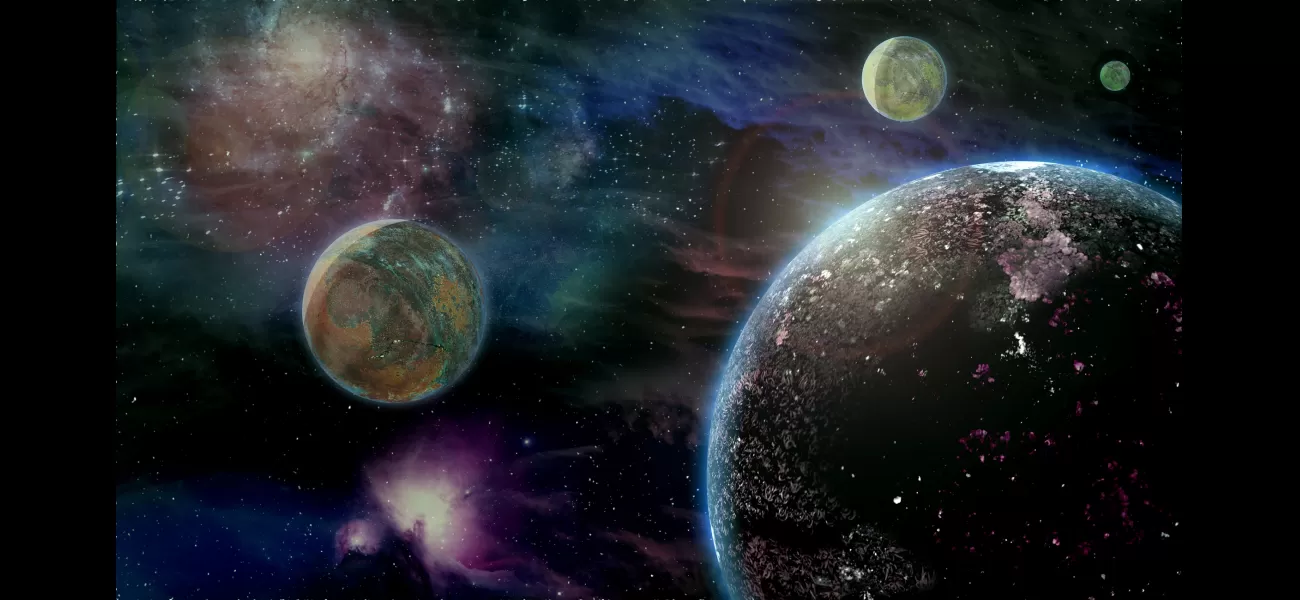Discovery of many planets leads to significant advancement in quest to find extraterrestrial beings.
This is a monumental achievement for humanity.
January 24th 2024.

In a groundbreaking discovery, scientists have found evidence of dozens of new exoplanets that could potentially sustain life. This exciting breakthrough could bring us one step closer to uncovering the existence of aliens in our universe.
Thanks to the advanced technology of Nasa's Transiting Exoplanet Survey Satellite, researchers were able to detect 85 potential exoplanets outside of our solar system. These exoplanets are similar in size to gas giants like Jupiter, Saturn, and Neptune, but what sets them apart is their distance from their host star.
Unlike most exoplanets found thus far, these newly discovered ones are located in the "habitable zone" of their respective systems. This means that they are at just the right distance from their star, where temperatures could support the presence of liquid water - a crucial ingredient for the development of life.
The process of finding exoplanets is incredibly challenging, as we cannot see them directly with telescopes. Instead, astronomers rely on detecting dips in the brightness of stars, which could indicate the presence of a planet passing in front of them. These dips are known as transits and require multiple observations to confirm the existence of an exoplanet.
However, a team of international researchers, led by PhD candidate Faith Hawthorn at the University of Warwick, took on the difficult task of analyzing systems with only two observed transits. This led to the discovery of 85 potential exoplanets with longer orbits, indicating a greater distance from their host star.
"We searched through 1.4 million stars and narrowed it down to just 85 systems that show evidence of exoplanets with only two transits," explained Hawthorn. "We still need to confirm these findings, but we're hopeful that further observations will help us do so."
This project was a collaborative effort involving researchers at different stages of their careers, including an undergraduate student, Kaylen Smith Darnbrook, who contributed to the analysis during a summer project. The team has also made their discoveries public, allowing other astronomers to study these intriguing exoplanets in more detail.
Co-author Professor Daniel Bayliss expressed his excitement about the potential of these newly discovered exoplanets, saying, "It's thrilling to find these planets and to know that some of them may have the right conditions to support life."
The search for alien life is a hot topic in the scientific community, with multiple projects and missions dedicated to this quest. Just last year, a mission was launched to explore Jupiter's icy moons, which are considered a promising location for life within our own solar system.
Additionally, a recent study suggested that Mercury, often overlooked as a potential candidate for life, could potentially have salty glaciers hiding beneath its surface. And further away, the James Webb Space Telescope has provided the strongest evidence yet for the presence of life on an exoplanet located 120 light-years away.
As if that weren't enough, a Nasa-backed study in 2019 claimed that we could find evidence of alien life on an exoplanet within the next few decades. It seems that the search for extraterrestrial life is in full swing, and we can only hope to uncover more exciting discoveries in the future.
The possibilities are endless, and we can only imagine what we may find in our exploration of the universe. Who knows, maybe one day we'll come face to face with our cosmic neighbors. As the saying goes, the truth is out there. We just have to keep searching.
Thanks to the advanced technology of Nasa's Transiting Exoplanet Survey Satellite, researchers were able to detect 85 potential exoplanets outside of our solar system. These exoplanets are similar in size to gas giants like Jupiter, Saturn, and Neptune, but what sets them apart is their distance from their host star.
Unlike most exoplanets found thus far, these newly discovered ones are located in the "habitable zone" of their respective systems. This means that they are at just the right distance from their star, where temperatures could support the presence of liquid water - a crucial ingredient for the development of life.
The process of finding exoplanets is incredibly challenging, as we cannot see them directly with telescopes. Instead, astronomers rely on detecting dips in the brightness of stars, which could indicate the presence of a planet passing in front of them. These dips are known as transits and require multiple observations to confirm the existence of an exoplanet.
However, a team of international researchers, led by PhD candidate Faith Hawthorn at the University of Warwick, took on the difficult task of analyzing systems with only two observed transits. This led to the discovery of 85 potential exoplanets with longer orbits, indicating a greater distance from their host star.
"We searched through 1.4 million stars and narrowed it down to just 85 systems that show evidence of exoplanets with only two transits," explained Hawthorn. "We still need to confirm these findings, but we're hopeful that further observations will help us do so."
This project was a collaborative effort involving researchers at different stages of their careers, including an undergraduate student, Kaylen Smith Darnbrook, who contributed to the analysis during a summer project. The team has also made their discoveries public, allowing other astronomers to study these intriguing exoplanets in more detail.
Co-author Professor Daniel Bayliss expressed his excitement about the potential of these newly discovered exoplanets, saying, "It's thrilling to find these planets and to know that some of them may have the right conditions to support life."
The search for alien life is a hot topic in the scientific community, with multiple projects and missions dedicated to this quest. Just last year, a mission was launched to explore Jupiter's icy moons, which are considered a promising location for life within our own solar system.
Additionally, a recent study suggested that Mercury, often overlooked as a potential candidate for life, could potentially have salty glaciers hiding beneath its surface. And further away, the James Webb Space Telescope has provided the strongest evidence yet for the presence of life on an exoplanet located 120 light-years away.
As if that weren't enough, a Nasa-backed study in 2019 claimed that we could find evidence of alien life on an exoplanet within the next few decades. It seems that the search for extraterrestrial life is in full swing, and we can only hope to uncover more exciting discoveries in the future.
The possibilities are endless, and we can only imagine what we may find in our exploration of the universe. Who knows, maybe one day we'll come face to face with our cosmic neighbors. As the saying goes, the truth is out there. We just have to keep searching.
[This article has been trending online recently and has been generated with AI. Your feed is customized.]
[Generative AI is experimental.]
0
0
Submit Comment





